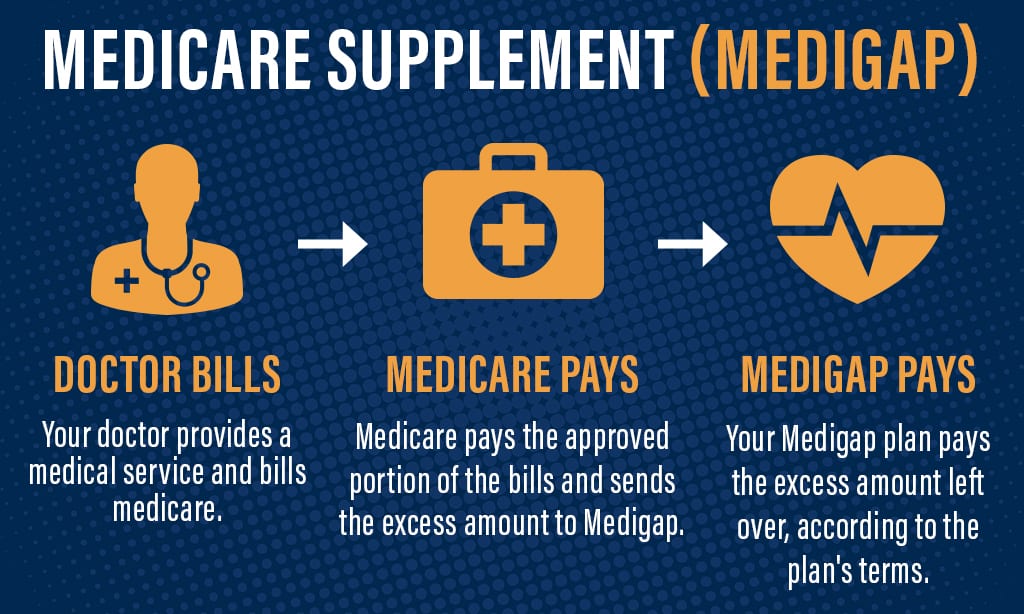What is a MSA Plan?
Simply speaking a Medicare Savings Account (MSA) plan is the Medicare equivalent of a traditional HSA plan. The biggest difference is that your insurance company deposits the money in your health savings account, instead of you.
I’ve been getting a lot of questions about this new plan with a Medicare Savings Account offered in New Hampshire in 2021. So here is some information on this type of plan and how it works. If you’d like more information or have additional questions click the button below and we’ll set up a time to chat or I can mail you more information.
How does a Medicare MSA work?
MSA plans are required to provide you with the same basic coverage as Original Medicare. They are a Medicare Advantage plan under Part C of Medicare with a high-deductible plus a medical savings account.
Your MSA plan makes an initial deposit each year into your account. This money is yours to spend, move to your own bank and/or invest as you choose. And if you change plans later during open enrollment, you keep the money.
MSA plans annual deposits typically range from $2,000 to $3,000 each year, reducing your out of pocket costs to between $3,000 and $5,000 which can be much less than other Medicare Advantage plans.
MSA plans come with a high deductible health plan (HDHP) and a bank account to help pay your medical costs. These plans typically have deductibles that range from $5,000 to $8,000.
HDHPs, as you might have figured out, have a high deductible that you must pay in full before receiving coverage. After you pay off the deductible, the HDHP covers all of your costs for the remainder of the year.
As stated earlier, MSA plans also come with a bank account where the plan provider deposits funds each year for your medical expenses. You can use these funds to pay on the deductible. (See some examples at the bottom of this page.)
Who should consider a MSA Plan?
MSA plans are great for people who are fairly healthy or who do not use traditional medicine. There are generally three main groups of people who choose MSA plans.
- Christian Scientists
- Users of Holistic or Naturopathic Medicine
- Healthy people who travel frequently or may stay long periods in other states
- Healthy Self-employed small business owners
Key Feartures of MSA Plans
- $0 Monthly Premium
- No network — access to any Medicare-participating provider
- Freedom to choose the best Part D plan
- Potential to grow account balance over time
- Investment opportunities for balances over $2,000
- Special tax advantages — balance and qualified expenditures not taxed
- Some plans also offer extra benefits.
Other important notes regarding MSA plans:
- Funds contributed to MSA plans are not taxed as long as they are used for qualified medical expenses.
- You cannot personally deposit more money in your MSA bank account. Once you’ve used up all the money in the account, you pay out-of-pocket until the deductible is reached.
- If you have any money leftover at the end of the year, it will remain in the account for the following year.
- To be in a MSA plan you have to remain enrolled in Medicare Parts A and B.
- MSA plans are not allowed to include Part D prescription drug coverage. To get prescription drug coverage, you will have to join a standalone Part D plan.
- If you choose to join a Part D plan, out-of-pocket costs associated with the prescription drug plan do not count toward your MSA plan’s deductible but copays for your prescriptions can be paid for from HSA or MSA funds.
For a list of Qualified Medical Expenses go here: https://www.mainemedicareoptions.com/qualified-medical-expenses
Some Examples of Medicare Medical Savings Account (MSA) plans
Remember, these are only examples. Plans vary and actual deposits and deductibles may be different from these examples.
Example #1
James and Mary are interested in joining Medicare MSA Plans. Plans ABC and XYZ are available in their area.
| PLAN ABC | PLAN XYZ | |
|---|---|---|
| Yearly deposit | $2,500 | $1,500 |
| Yearly deductible | $4,000 | $3,000 |
| What you pay after the deductible | $0 | $0 |
| Out-of-pocket maximum | $4,000 (same as deductible) | $3,000 (same as deductible) |
If James joins Plan ABC:
- Plan ABC deposits $2,500 into his account at the beginning of the year.
- If he uses the money in his account for Medicare-covered Part A and Part B services, he’ll have to spend $1,500 out-of-pocket before he meets his deductible and before the Medicare MSA Plan will begin paying for his health care.
- Once James has met his deductible, Plan ABC pays all of his Medicare-covered Part A and Part B health care, and he pays nothing.
- James must continue to pay the monthly Part B premium
If Mary joins Plan XYZ:
- Plan XYZ deposits $1,500 into her account at the beginning of the year.
- If she uses the money in her account for Medicare-covered Part A and Part B services, she will have to spend $1,500 out-of-pocket before she meets her deductible and before the Medicare MSA Plan will begin paying for her health care.
- Once Mary has met her deductible, Plan XYZ pays all of her Medicare-covered Part A and Part B health care costs, and she pays nothing.
- Mary must continue to pay the monthly Part B premium.
Example #2
Linda joins a Medicare MSA Plan with a $3,000 yearly deductible and deposits $1,500 into her account. The plan pays for all Medicare-covered services once Linda meets the deductible. Look below to see how Linda uses the money in her account.
Linda has a $500 doctor’s visit and uses her account to pay for this expense. Since the expense is a Medicare-covered service, the $500 is credited towards her deductible.
| Account balance | Deductible |
|---|---|
| $1,500 − $500 = $1,000 | $3,000 − $500 = $2,500 |
Linda gets an MRI that costs $1,000. She uses her account to pay for this expense. Since the expense is a Medicare-covered service, the $1,000 is credited towards her deductible.
| Account balance | Deductible |
|---|---|
| $1,000 − $1,000 = $0 | $2,500 − $1,000 = $1,500 |
Linda visits specialists and the total cost of the visits and additional tests is $1,500. She’s used all the money in her account, and must now pay out-of-pocket until she reaches her deductible. Since the expense is a Medicare-covered service, the $1,500 is credited towards her deductible.
| Account balance | Linda’s out-of-pocket costs | Deductible |
|---|---|---|
| $0 | $1,500 | $1,500 − $1,500 = $0 (deductible is met) |
Linda is admitted to a hospital for surgery. The cost for her hospital stay is $12,000. Since she has met her deductible, the plan pays all of her Medicare-covered Part A and Part B services for the remainder of the year.
| Linda’s out-of-pocket costs | Plan pays |
|---|---|
| $0 | $12,000 |
Example #3
David joins a Medicare MSA Plan. On January 1, the plan deposits $1,500 into his account. The plan’s yearly deductible is $3,000. The plan pays for all Medicare-covered services once David meets the deductible. Look at how David uses his account.
David has a $500 doctor’s visit and uses his account to pay for this expense. Since the expense is a Medicare-covered service, the $500 is credited towards his deductible.
| Account balance | Deductible |
|---|---|
| $1,500 − $500 = $1,000 | $3,000 − $500 = $2,500 |
David visits the dentist, who charges $600 for the service. He uses his account to pay for this expense. The dental service is a Qualified Medical Expense, but it’s not a Medicare-covered service. He may use his account for the dental service, but the expense isn’t credited toward his deductible.
| Account balance | Deductible |
|---|---|
| $1,000 − $600 = $400 | $2,500 − $0 = $2,500 |
David’s electric bill is due. He uses the money in his account to pay the $200 bill. He’s allowed to use the account to pay for this non-medical expense, but it isn’t credited towards his deductible. He’ll also pay income tax and a 50% tax penalty on this non-medical expense.
| Account balance | Deductible |
|---|---|
| $400 − $200 = $200 | $2,500 − $0 = $2,500 |
David falls and goes to the emergency room. The emergency room visit and other costs related to his fall total $3,500. He uses the remaining $200 in his account and must then pay $2,300 out-of-pocket until he meets his deductible. After he meets his deductible, the plan pays the remaining cost of his emergency room visit and for all of his Medicare-covered costs for the remainder of the year.
| Account balance | David’s out-of-pocket costs | Deductible | Plan pays |
|---|---|---|---|
| $200 − $200 = $0 | $2,300 | $2,500 − $2,500 = $0 (deductible is met) | $1,000 |
How do you avoid tax withdrawals from your account for Qualified Medical Expenses?
File Form 1040, U.S. Individual Income Tax Return [PDF, 188 KB], and Form 8853 [PDF, 89.4 KB] each year to report your Qualified Medical Expenses.
Where can I get a list of Qualified Medical Expenses?
For a list of services and products that count as Qualified Medical Expenses and for other tax information, view IRS publication #969 [PDF, 2.13 MB] for the year that you’re filing.
Would you like my help?

If you would like help understanding your costs or need help finding a plan or if just want to ask a few questions, you can call 207-370-0143 or use my simple form on the CONTACT page of this site to send an email message.
The best part about working with me is that it will not cost you anything to talk with me to discuss your options and review the plans that are available. I am an independent insurance agent and I am paid by the insurance companies (not you) in the form of a commission when you enroll in a plan.
You will not pay anything to meet with me and you will pay the same price for your insurance that everyone pays whether they had my help or not.
“My goal is to help people and I have found great joy in being able to offer my services to people who need my help.”
Learn more about Medicare Advantage Plans (Part C)













